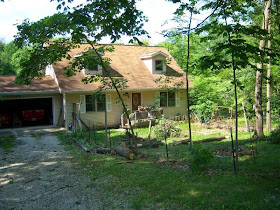A refreshing green tea resembling dew drops, with a great citrus nose and wonderful fresh grass taste.
We are proud to source all our Nepal teas direct from Greenland Organic Farm, who are very much at the forefront of a burgeoning Nepali tea industry dedicated to producing high quality artisanal teas. Greenland Organic Farm are completely pesticide and chemical free farm dedicated to producing tea in an ethical and fair manner. Greenland Organic Farm is located in East Nepal in the shadows of Mt. Kancghenjunga at an altitude of 3,000m.
Sample provided by What-Cha
My Review:
Good grief, where did summer go? We are still enjoying warm days and sunshine, but the cool nights are bringing lots of color to the trees. Oh well, that just means we will soon be drinking a lot more hot steamy cups of tea.
Today I am reviewing a green tea from the mountains of Nepal. As always the sample is well packed in a resealable silver pouch. The label is simple, clear, and well thought out.
First impression comes with inhaling the aroma from the open bag. It has a light pleasant grassiness. The leaf itself is rolled into little balls. They are larger than gunpowder green but smaller than most tieguanyin I have seen. The pellets are dark green. There are also a few twisted loops of leaf.
Using the press and water heated to the recommended 75 C (167 F) the leaf was steeped for 2 1/2 minutes. Recommended time is 2 - 3 minutes.
The result is a yellow cup. It was nice and clear until I added the last few drops of liquid from the press without a strainer. That brought with it a little cloudy silt.
The wet leaf has a steamed vegetal aroma. The leaf is partially relaxed. The appearance surprises me a little as it is a lot more shredded looking than I expected. I have to remind myself this is Nepali tea and not Chinese. Steeped, the leaf pieces have become fresh and green.
The taste is crisp, clean, and refreshing. It is grassy with a neat sharpness throughout the sip. It is the sort of good bitter that I like. There is no doubt when you taste, this is green tea.
I notice the insides of my cheeks tingle and the grassy taste lingers long after the tea is swallowed.
This seems more savory than sweet to my tastes. I have a major sweet tooth so you may disagree. For science only, I added some sweetener ;) My opinion is this doesn't need sweetener and is not particularly improved by adding it. The addition, however, did make the citrus note mentioned in the company description obvious to me. I was tasting it before but not recognizing it as such. It also added an earthy woods note under the flavors early in the sip.
 The second cup is a more cloudy than the first, and I did use the strainer for the entire cup. The color is similar to the first. The leaf now has more of a marine scent.
The second cup is a more cloudy than the first, and I did use the strainer for the entire cup. The color is similar to the first. The leaf now has more of a marine scent.The taste is less grassy and more earthy, leaning towards mineral and mushroom. There is plenty of flavor in the cup, it is just a lot different than the first. I am not noticing the bite of the first cup and the cheek tingle is substantially reduced.
I personally relate better to the flavors of the first cup, though both were easily drinkable.
You can find Nepal Second Flush 2014 Dew Drops Green Tea here.






































